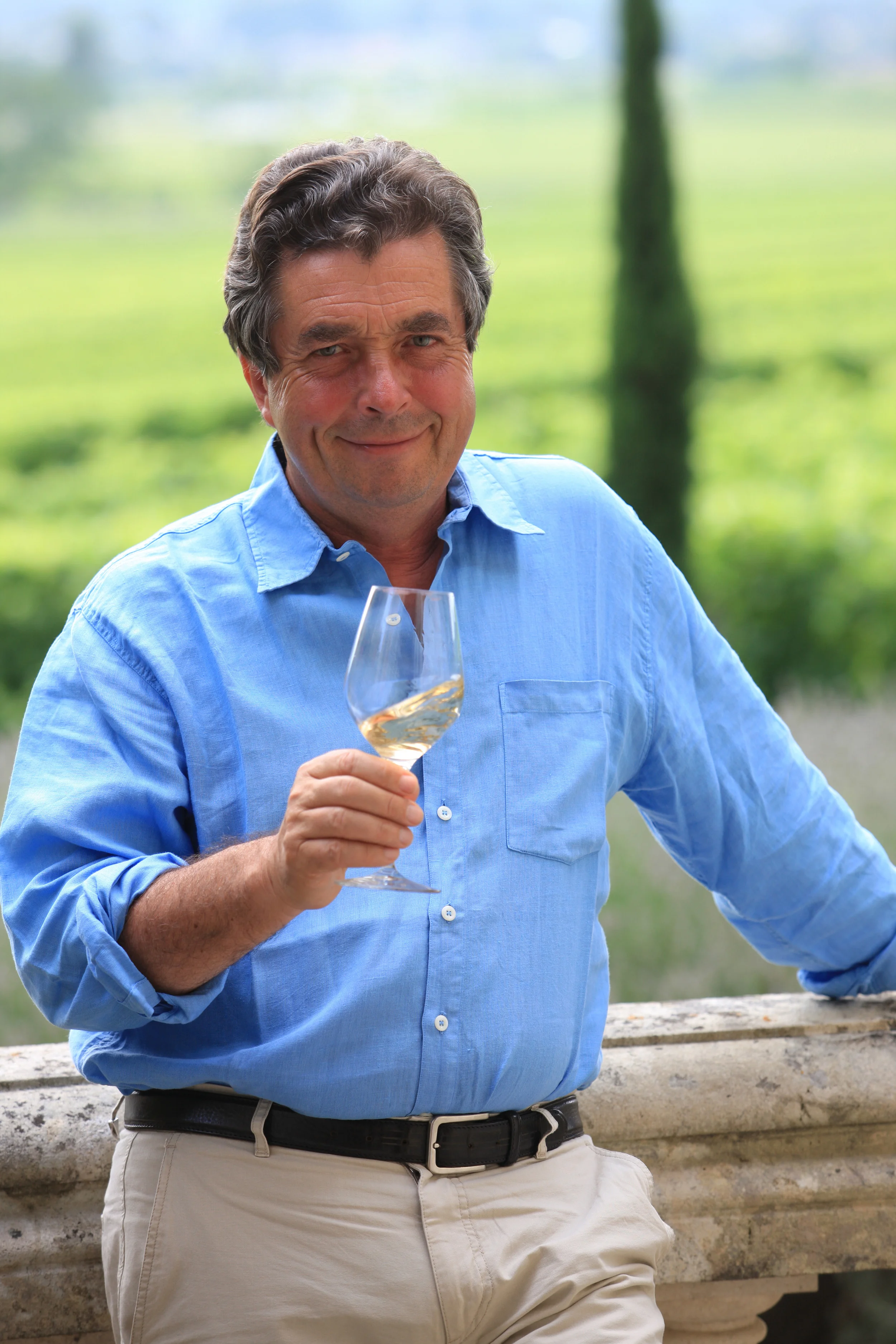Denis Dubourdieu on Drinkability as an Essential Characteristic of Dry White Bordeaux
Denis Dubourdieu is the leading authority on the white wines of Bordeaux. Beyond being the Director of General Oenology at the University of Bordeaux, he manages four family estates, including Doisy-Daëne and Clos Floridéne, and consults with wineries such as Château Cheval Blanc and Château d’Yquem. Here, he guides us through Bordeaux’s distinctive white wines.
Sophie Menin: What are the hallmarks of a great dry white Bordeaux?
Denis Dubourdieu: Drinkability is the most important quality of a Bordeaux Blanc. They should be fresh and fruity without too much alcohol. A good one will quench your thirst.
SM: What distinguishes the region’s sauvignon blanc and sémillon, the two grapes that make up most white Bordeaux?
DD: Our sauvignon blanc is a wine of the Atlantic coast. It is more delicate than the intensely grassy and tropical wines you find in New Zealand and less flinty than sauvignon blanc from Sancerre and Pouilly Fumé. At its best, it exhibits flavors of grapefruit and white peach.
Bordeaux is at the northern limit of where sémillon can be cultivated and it does very well here. It is our chardonnay. The finest examples are grown on limestone. Bordeaux wines made from sémillon smell of hazelnut, almonds and brioche. After a few years, they develop aromas of fresh apricot or orange.
SM: How has dry white Bordeaux changed since you started making wine?
DD: Bordeaux Blanc as we know it did not exist thirty years ago. Our dry white wines used to smell like oxidized sweet wines. Things started to change in the mid nineteen eighties when I was directing white wine research in the enology department of the University of Bordeaux and we began to understand which molecules were involved in creating the characteristic aromas of sauvignon blanc and the role of the yeast in protecting wines from oxidation.
When we applied this knowledge to Bordeaux’s two main white grape varieties, sauvignon blanc and sémillon, we discovered their fruity taste and how well they complement each other in a dry white blend.
SM: Could you describe the sweet white Bordeaux known as Sauternes for us?
DD: Sauternes caresses the mouth. There is a quality of softness. You don’t sense any corners. No matter how long the wine has aged, you always encounter aromas of fresh fruit, not just jam and honey. Last month I opened a bottle of our 1934 Doisy-Daëne, a sweet white made next door to Sauternes in the commune of Barsac. It was a complex bomb of orange, smoke, chocolate, ginger and apricot.
SM: When do you drink Sauternes?
DD: I like young Sauternes as an aperitif and old Sauternes at the end of the meal.

